Category: Projects Related to Palm OS PDAs
Fixing the backlight of a Palm Vx
Published on: 2020-01-19
Caution: I won’t take any responsibility for any damage!
Hint: most images can be enlarged by downloading or opening them in a new tab.
Palm Vx Specifications
The Palm Vx is a nice little device with some features that were not really new but nice to have at the time it was released:
| OS: | Palm OS 3.3, later 3.5 |
| Upgradable to: | Palm OS 4.1 |
| FlashROM: | 2 MB |
| Display: | 16-greyscale MSTN LCD touchscreen |
| Display Size: | 3.2 inch |
| Display Resolution: | 160x160 pixels |
| Touchscreen Type: | Resistive screen |
| Backlight: | Yes |
| RAM (memory): | 8 MB |
| Processor: | Motorola DragonBall EZ MC68EZ328 20 MHz |
| Interfaces: | RS232 (57600 bps max.), Infrared (IrDA 1.0) |
| Power Supply: | Built-in Li-Ion battery |
| Size (in mm): | 115 x 80 x 10 |
| Weight: | 114 g |
| Released: | October 1999 |
| Release Price: | US$399 |
8 MB of RAM for data and programs was quite a lot for that time. Also, the 20 MHz processor was a small boost compared to the usual 16 MHz in other devices.
The Backlight Issue and Fix
Unfortunately, some devices have one major problem: the backlight does not work. Moreover, the battery drains faster than usual. The problem is caused by a faulty lamp driver IC. Some sites suggest removing this IC to solve the draining battery problem, but this solves just one of two problems.
After getting one of those Palm Vx with a non-working backlight in my hands, I decided to replace the IC with a new one. In my case, the IC had the label “H826 1220”, but a second Vx with a working backlight had the IC “H826 1061”, so the second part of this label should not be this important. After searching the web, I found out that the IC is a “MSOP8” housing and the name of this IC is “HV826MG”. An eBay seller offered 15 pieces of “NEW HV826MG SUPERTE D/C:07+ MSOP8” for around 5€. (The ICs were labeled as “H826 7342”.) I ordered them and after a few weeks, they arrived. (The case of a Vx can be opened with a hairdryer and some flat plastic chips, which can be put between the housing and the frame to carefully get the back off the Vx. - Be careful, the back frame can be very hot!)
The mentioned IC is located on the right side underneath the right (display?) connector:
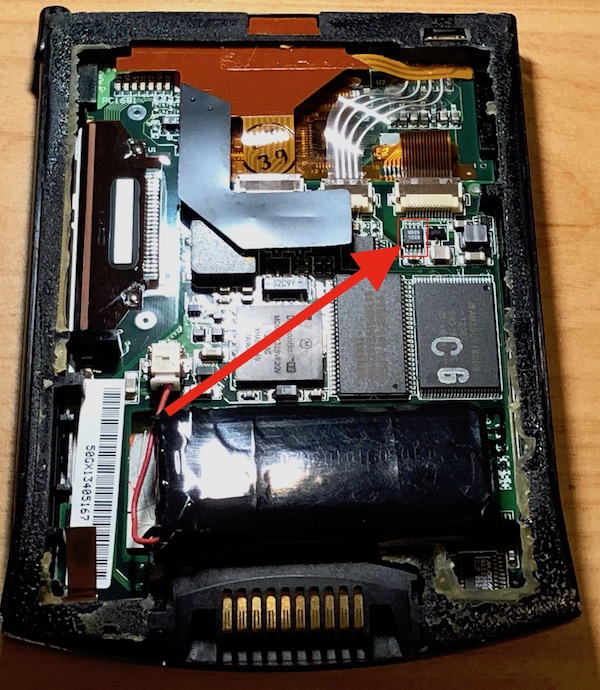
I removed the IC with some flux and desoldering tools:
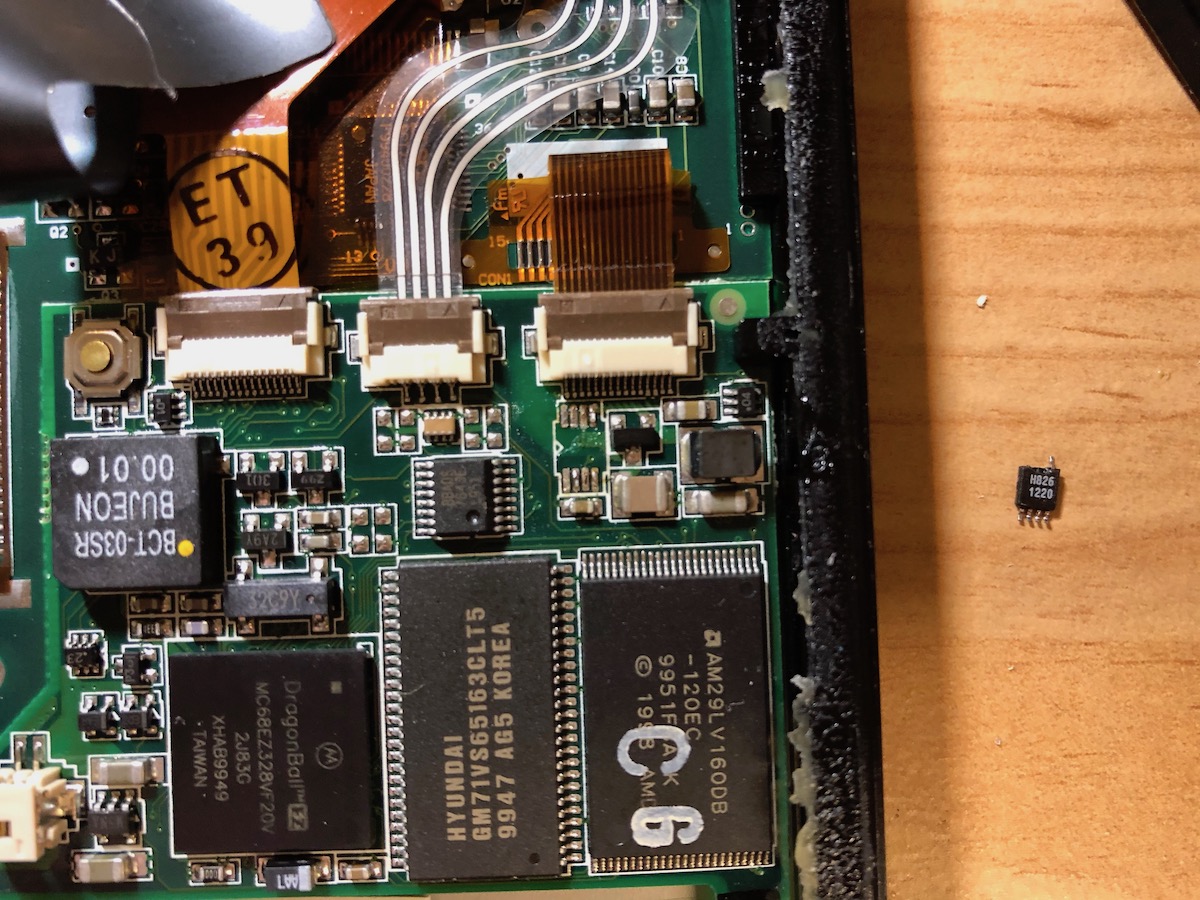
After placing the new IC in, I soldered it onto the board and removed the solder bridges with desoldering tools:
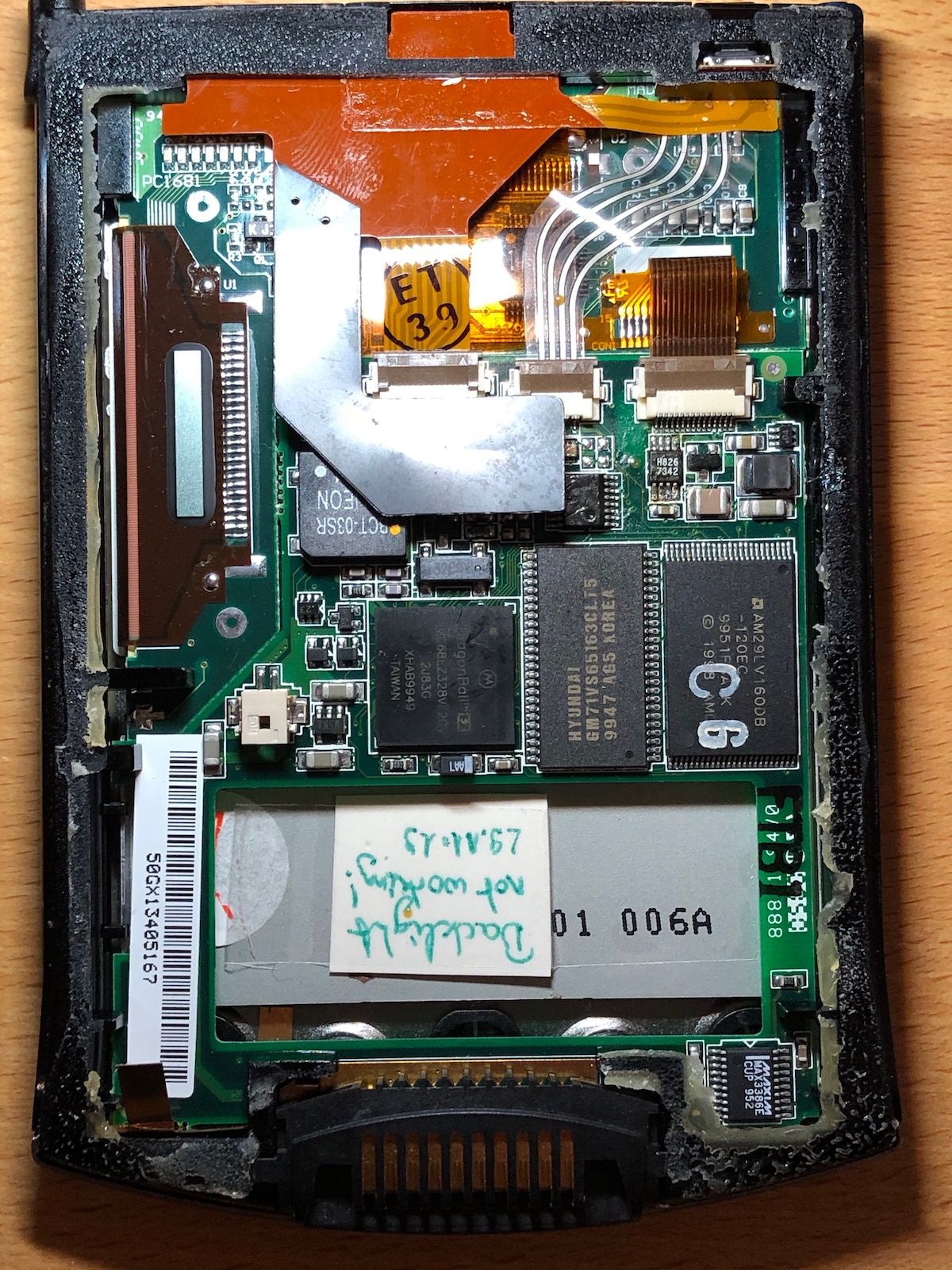
I admit that it is not the most beautiful result, but it works:
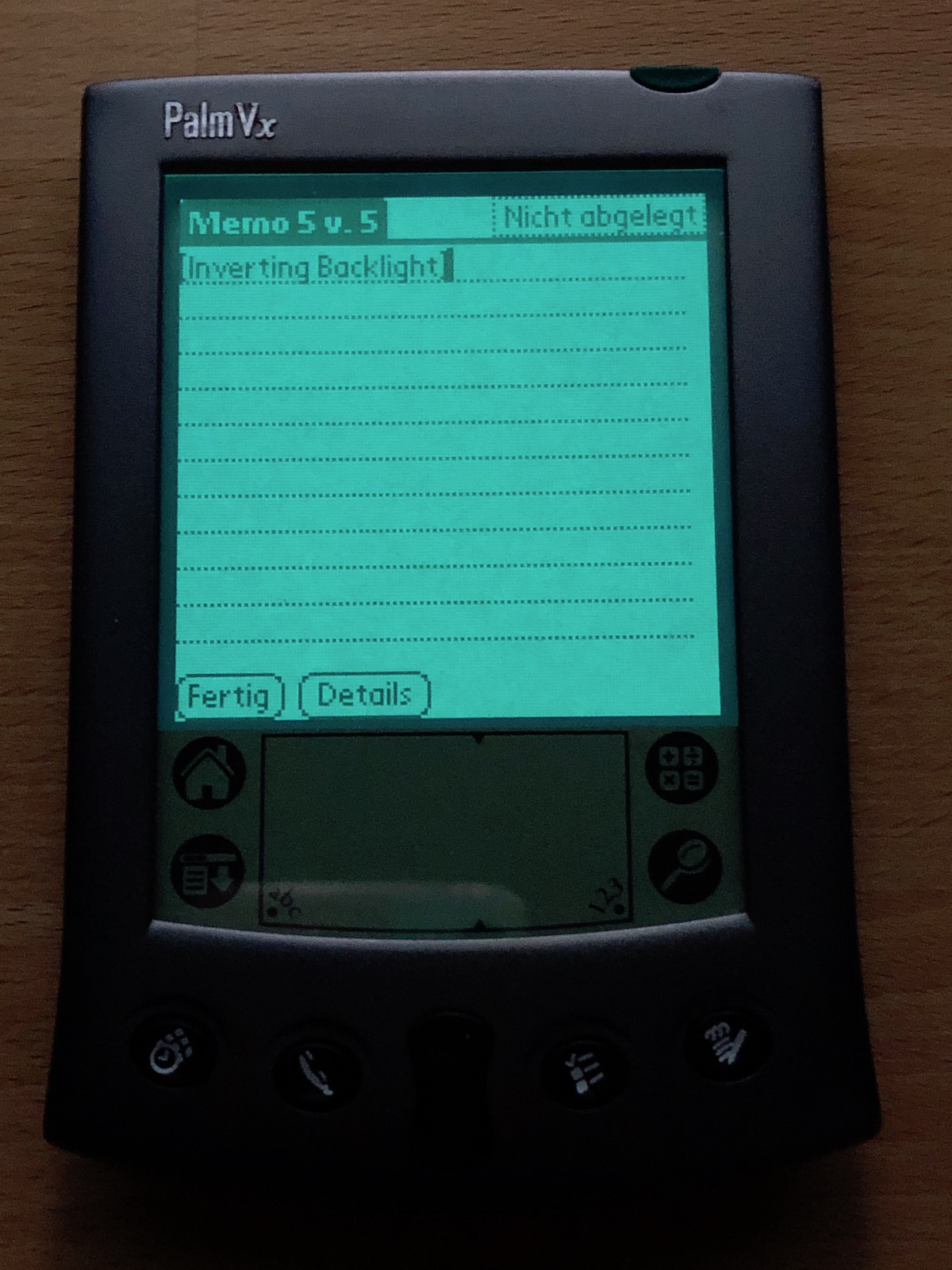
If you want to check the IC, here are the voltage values (compared to ground) of a working HV826MG-IC:
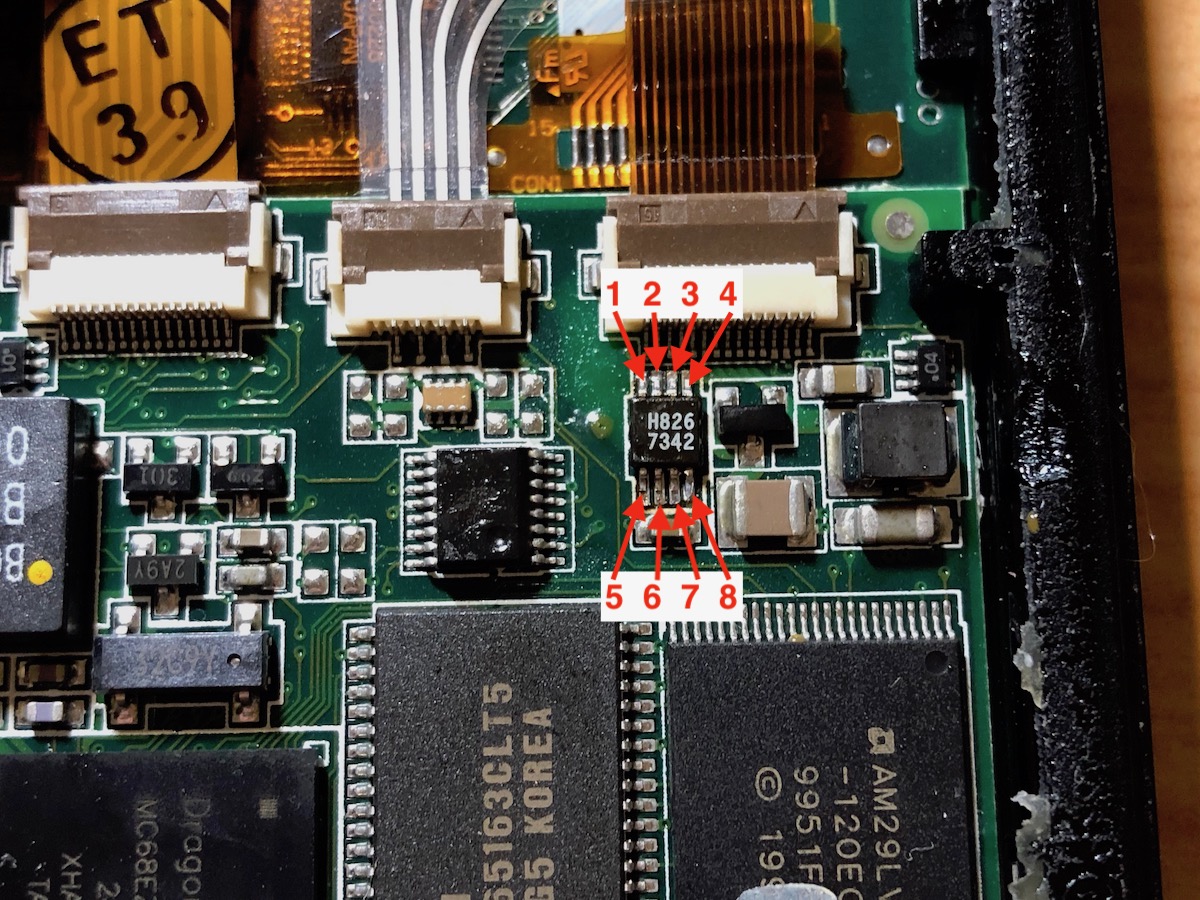
Backlight on:
| 1 | 2 | 3 | 4 |
|---|---|---|---|
| 28V | 52V | 75V | 3.8V |
| 5 | 6 | 7 | 8 |
| 3.3V | 0.8V | 0.57V | 0.15V |
Backlight off:
| 1 | 2 | 3 | 4 |
|---|---|---|---|
| 0.38V | 0.8V | 3.7V | 3.9V |
| 5 | 6 | 7 | 8 |
| 3.3V | 0.24V | 0.33V | 0.07V |
Inverting the Backlight
Hint: If you have a Vx with a broken backlight and want to see if the current state of the non-working backlight is “on” or “off”, just switch your device off, then on again, go to “memos”, create a new sheet and enter via Graffiti:
“shortcut” “period” 8
“shortcut” as Symbol:

“period” as dot → . and 8 as number. (A dot is generated by double-tapping the graffiti area.)
You should now see “[Inverting Backlight]” and when you hold down the power switch, the display should invert the pixels (from “white” to “dark” and from “dark” to “white”), which means that the status of your non-working backlight is “on”:
![]()